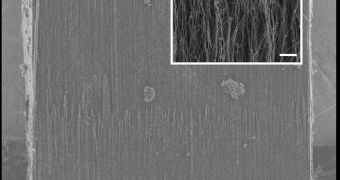Carbon nanotubes, though a relatively recent find, have fueled the imagination of many scientists, who strongly believe that they are the future of electronic circuitry and so, the successors of silicon, who by now has almost reached the limit of its applications.
Computing industry is not the only field where these nanoscopic materials could find practical applications. According to a new study from Rensselaer Polytechnic Institute, they could mimic biological tissues, potentially leading to artificial muscles and other electro-mechanical systems.
Their claim is based on the discovery that these one-atom-thick carbon sheets are able to sustain repeated stress, while retaining their mechanical and structural integrity, much like biological soft tissues do. If we add their strong electrical conductivity and the ability to endure wear and tear (which cause material fatigue) this would make the carbon nanotubes the ideal material for artificial tissues.
Victor Pushparaj is a senior research specialist in Rensselaer's department of materials science and engineering. Together with a team of scientists at the university, he successfully created a free-standing, macroscopic, two-millimeter square block of carbon nanotubes, consisting of millions of individual nanotubes, that was able to sustain over half a million consecutive compressions and relaxations without changing their original shape and mechanical properties.
"The idea was to show how fatigue affects nanotube structures over the lifetime of a device that incorporates carbon nanotubes," Pushparaj said. "Even when exposed to high levels of stress, the nanotubes held up extremely well. The behavior is reminiscent of the mechanics of soft tissues, such as a shoulder muscle or stomach wall, which expand and contract millions of times over a human lifetime."
Carbon nanotubes on their own are not very promising in future synthetic biomaterials, but Pushparaj says that they are already more effective than polymers and other engineered materials that exhibit shape memory, so by combining them with some polymers, a new material could be created, that will perform as well as soft tissue.

 14 DAY TRIAL //
14 DAY TRIAL //